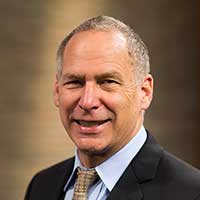Observations from the Brink of Retirement
A retirement income specialist shares three important lessons he's learned during his own financial and mental journey as he gets ready to dive into retirement. His personal insights could help guide your path as well.


Planning for my own retirement has been interesting, as my day job is teaching financial advisers about retirement planning. At this point the planning is done, and the end of my full-time employment is on the horizon.
Here are three things I’ve learned while going through my retirement planning process.
1. Planning is Important – Even If the Future Is Murky
I have found that the questions we ask people when building a retirement income plan are really hard to answer. What will you do in retirement? Where will you live? Will work be part of retirement? These are all questions that I have struggled with, and the answers keep changing. For me (and probably for most busy workers), it’s hard to figure a lot of this out until you are actually retired and have the time to give it enough attention.
From just $107.88 $24.99 for Kiplinger Personal Finance
Become a smarter, better informed investor. Subscribe from just $107.88 $24.99, plus get up to 4 Special Issues

Sign up for Kiplinger’s Free Newsletters
Profit and prosper with the best of expert advice on investing, taxes, retirement, personal finance and more - straight to your e-mail.
Profit and prosper with the best of expert advice - straight to your e-mail.
One decision that does have to be addressed upfront is choosing a retirement date. This one has so much impact on retirement security that it needs to be considered carefully. At the same time, you may be looking forward to retirement life — I know I am. I look forward to joining my spouse, who has been in retirement for several years, trying new things, contributing to the world in a different way, and just having some unstructured time during the day to breathe.
I did what I would encourage everyone to do: Take your time, don’t make the decision in reaction to short-term circumstances, and carefully figure out the financials before making the decision to retire.
So, what do you do if you don’t know exactly know what you will do in retirement, but you need answers to these crucial questions to complete the planning process? What I’ve learned is that you don’t need the final answer to plan — you just need to start somewhere. If you are not sure, then make an educated guess.
A good place to start is to assume that your retirement lifestyle will cost the same as your life prior to retirement. One simple way to determine how much after-tax income you need to live is to just look at your take-home pay — for most this is what people live on. Similarly, choose a retirement date that makes sense to you, and then begin to plan. You may discover that the numbers don’t work and you may need adjustments to the plan or you have to make adjustments to changing circumstances.
Retirement income planning is rarely linear, there’s always going to be multiple adjustments along the way.
2. Risk Means Something Completely Different in Retirement
When you get to retirement, the risk that comes to the forefront is that your resources won’t last as long as your retirement does. This means that decisions need to be made with this concern at the forefront. One thing this means for most retirees is that while they need to invest with safety in mind, they still need to take some investment risk with their portfolio. (Much research looking at whether resources will last over a 30-year retirement period assumes at least a 50/50 stock/bond allocation.) At the same time, watching your portfolio go up and down in retirement when you no longer have a paycheck can be terrifying.
One way to cope is to use what is often called the flooring approach — in which safe investments or annuity products are used to build an income floor to pay basic expenses while other assets are invested more aggressively, and portfolio withdrawals are used to meet additional expenses. This is what I’m doing. I’m comfortable with risk in a portfolio but I also have no intention of worrying about paying bills at the end of the month.
The simple approach that I have used is building lifetime income with pensions, Social Security and annuity products, while maintaining a diversified portfolio primarily consisting of equities.
3. Own the Plan – With Both Sides of the Brain
Joe Jordan, who talks a lot about behavioral finance, has an important saying: A retirement income plan has to appeal to both sides of the brain. What he means is that it’s not only important that the numbers work, but the plan has to appeal to the emotional side of the brain as well. I’ve embraced this approach in my own planning — knowing that I need to feel good about the approach that I pick — I call this the sleep at night test.
Don’t underestimate this idea that it’s not just about numbers. Respect that your sense of security (which relates to happiness in retirement) is as important as the numbers. I also know enough about the numbers to know that there are a number of reasonable approaches that can work. Owning the plan also means having a better chance of sticking with it during retirement.
Conclusion
If there’s a unifying theme to all of this it’s that planning prior to retiring is critical, but it should also be personal. And it’s definitely a journey, not a destination. So here we go. I’m ready for phase one of retirement, and I look forward to reporting back as we see how it goes.
Profit and prosper with the best of Kiplinger's advice on investing, taxes, retirement, personal finance and much more. Delivered daily. Enter your email in the box and click Sign Me Up.

Dave Littell is the co-creator of the Retirement Income Certified Professional® (RICP®) program and a Professor of Taxation at The American College of Financial Services. He focuses on retirement income process, strategies and solutions to increase retirement security for consumers, business owners and their advisers through digestible retirement education.
-
 I'm feeling down since my grandkids left after the holidays.
I'm feeling down since my grandkids left after the holidays.We asked therapists for advice on how grandparents can handle the post-holiday blues.
-
 5 Golden Rules We (Re)learned in 2025 About Investing
5 Golden Rules We (Re)learned in 2025 About InvestingSome investing rules are timeless, and 2025 provided plenty of evidence demonstrating why they're useful. Here's a reminder of what we (re)learned.
-
 How to Earn a Fistful of Interest on Your Cash in 2026
How to Earn a Fistful of Interest on Your Cash in 2026Is your cash earning very little interest? With rates dropping below 4%, now is the time to lock in your cash strategy. Just watch out for the tax implications.
-
 5 Golden Rules We (Re)learned in 2025 About Investing
5 Golden Rules We (Re)learned in 2025 About InvestingSome investing rules are timeless, and 2025 provided plenty of evidence demonstrating why they're useful. Here's a reminder of what we (re)learned.
-
 I'm a Financial Adviser: Here's How to Earn a Fistful of Interest on Your Cash in 2026 (Just Watch Out for the Taxes)
I'm a Financial Adviser: Here's How to Earn a Fistful of Interest on Your Cash in 2026 (Just Watch Out for the Taxes)Is your cash earning very little interest? With rates dropping below 4%, now is the time to lock in your cash strategy. Just watch out for the tax implications.
-
 How Oil and Gas Investing Can Stabilize Returns and Shield Against Market Volatility: Tips From a Financial Pro
How Oil and Gas Investing Can Stabilize Returns and Shield Against Market Volatility: Tips From a Financial ProDirect exposure to oil and natural gas projects can strengthen a portfolio's long-term resilience with non-market-correlated cash flow and an inflation hedge.
-
 How to Navigate the Silence After Your Business Sells for $5 Million: Tips From a Financial Planner
How to Navigate the Silence After Your Business Sells for $5 Million: Tips From a Financial PlannerThe silence after a big sale can be disorienting. It's essential to redefine your identity and focus on your purpose before rushing into the next big thing.
-
 Turning 59½: 5 Planning Moves Most Pre-Retirees Overlook
Turning 59½: 5 Planning Moves Most Pre-Retirees OverlookAge 59½ isn't just when you can access your retirement savings tax-free. It also signals the start of retirement planning opportunities you shouldn't miss.
-
 Are Your Retirement Numbers Not Looking Good? A Financial Adviser Runs Through Your Options
Are Your Retirement Numbers Not Looking Good? A Financial Adviser Runs Through Your OptionsIf you're worried about a shortfall between your income and expenses in retirement, you're not alone. But there are ways you can make up the difference.
-
 How to Make the Most of These 2 Tax Breaks ASAP (They Have Expiration Dates)
How to Make the Most of These 2 Tax Breaks ASAP (They Have Expiration Dates)Taxpayers can strategically use these temporary tax opportunities in particular to lock in long-term tax savings. Here's how.
-
 What Changed on January 1: Check Out These Opportunities Created by the New Tax Law
What Changed on January 1: Check Out These Opportunities Created by the New Tax LawA deep dive into the One Big Beautiful Bill Act (OBBBA) reveals key opportunities in 2026 and beyond.